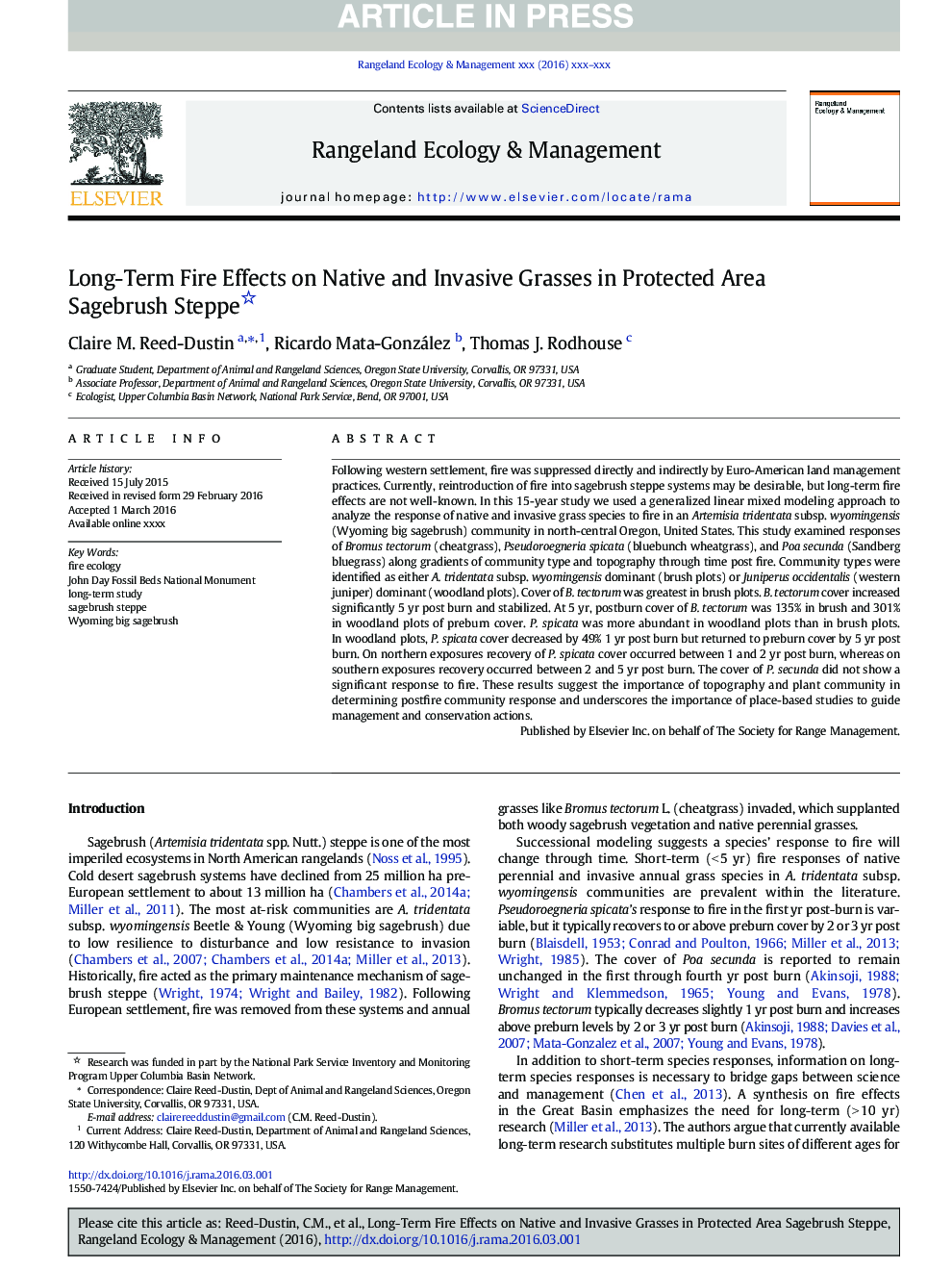| Article ID | Journal | Published Year | Pages | File Type |
|---|---|---|---|---|
| 4404221 | Rangeland Ecology & Management | 2016 | 8 Pages |
Abstract
Following western settlement, fire was suppressed directly and indirectly by Euro-American land management practices. Currently, reintroduction of fire into sagebrush steppe systems may be desirable, but long-term fire effects are not well-known. In this 15-year study we used a generalized linear mixed modeling approach to analyze the response of native and invasive grass species to fire in an Artemisia tridentata subsp. wyomingensis (Wyoming big sagebrush) community in north-central Oregon, United States. This study examined responses of Bromus tectorum (cheatgrass), Pseudoroegneria spicata (bluebunch wheatgrass), and Poa secunda (Sandberg bluegrass) along gradients of community type and topography through time post fire. Community types were identified as either A. tridentata subsp. wyomingensis dominant (brush plots) or Juniperus occidentalis (western juniper) dominant (woodland plots). Cover of B. tectorum was greatest in brush plots. B. tectorum cover increased significantly 5 yr post burn and stabilized. At 5 yr, postburn cover of B. tectorum was 135% in brush and 301% in woodland plots of preburn cover. P. spicata was more abundant in woodland plots than in brush plots. In woodland plots, P. spicata cover decreased by 49% 1 yr post burn but returned to preburn cover by 5 yr post burn. On northern exposures recovery of P. spicata cover occurred between 1 and 2 yr post burn, whereas on southern exposures recovery occurred between 2 and 5 yr post burn. The cover of P. secunda did not show a significant response to fire. These results suggest the importance of topography and plant community in determining postfire community response and underscores the importance of place-based studies to guide management and conservation actions.
Related Topics
Life Sciences
Agricultural and Biological Sciences
Agricultural and Biological Sciences (General)
Authors
Claire M. Reed-Dustin, Ricardo Mata-González, Thomas J. Rodhouse,
